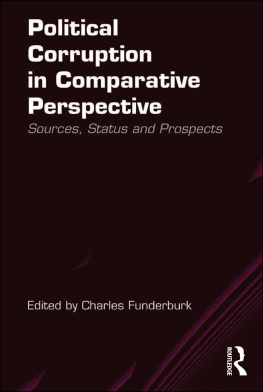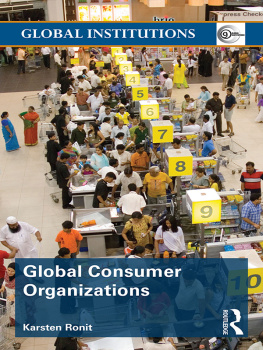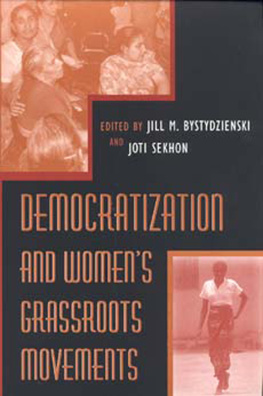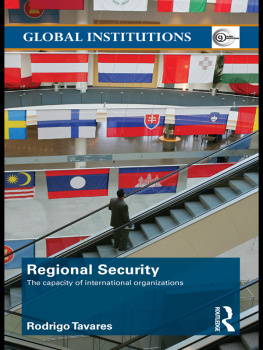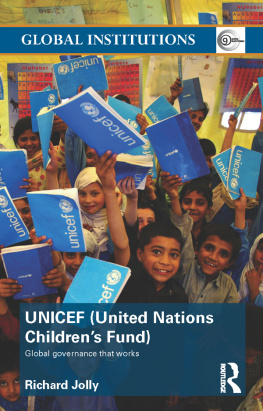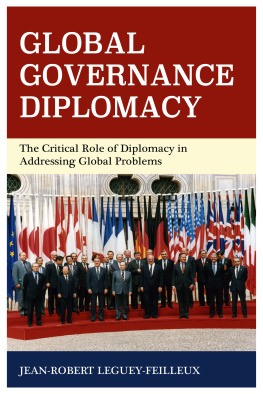First published 1989 by Westview Press, Inc.
Published 2019 by Routledge
52 Vanderbilt Avenue, New York, NY 10017
2 Park Square, Milton Park, Abingdon, Oxon OX14 4RN
Routledge is an imprint of the Taylor & Francis Group, an informa business
Copyright 1989 Taylor & Francis
All rights reserved. No part of this book may be reprinted or reproduced or utilised in any form or by any electronic, mechanical, or other means, now known or hereafter invented, including photocopying and recording, or in any information storage or retrieval system, without permission in writing from the publishers.
Notice:
Product or corporate names may be trademarks or registered trademarks, and are used only for identification and explanation without intent to infringe.
Library of Congress Cataloging-in-Publication Data
Del macetero al potrero. English.
Social policy from the grassroots: nongovernmental organizations
in Chile / edited by Charles Downs... [et al.].
p. cm.(Westview special studies in social, political, and
economic development)
Translation of: Del macetero al potrero.
ISBN 0-8133-7776-5
1. ChileSocial policy. 2. Non-governmental organizations
Chile. 3. Human servicesChile. I. Downs, Charles, 1950 .
II. Title. III. Series.
HN297.D45 1989
361.6'1'0983dc20 89-33742
CIP
ISBN 13: 978-0-367-28757-3 (hbk)
Contents
, Paolo Basurto
, Giorgio Solimano
, Carlos Vergara
, Patricio Cariola, S.J., and Alfredo Rojas
, Antonia Cepeda, Rosario Correa, Francisco Molina, Adriana Muoz, and Ximena Valds
, Antonio Infante
, Mara Teresa Marshall and Luz Mara Perez
, Blanca Velasco and Arodys Leppe
, Manuel Baquedano
, Center for Education and Technology
, Arno Klenner and Humberto Vega
, Jorge Chateau
, Luis Ziga
, Charles Downs and Giorgio Solimano
The United Nations Children's Fund (UNICEF) has traditionally maintained very fruitful relationships with non-governmental organizations. What we want to emphasize here is the significant role that these institutions play in designing and implementing programs to promote the development of children and women. This book is an analysis of non-governmental organizations and how they relate to social policies. The articles included here provide very important data that UNICEF will undoubtedly need to take into account in setting policies, particularly for Chile, where there has been a significant change in the context in which social policies operate, and the conditions found today are not the same as in the past.
Of the institutions of civil societynon-governmental organizationsin existence today, some are grassroots organizations with methods of operation based on the principles of workers' self-management, whereas others are institutions that provide scientific and technical skills as a means of increasing the social welfare of sectors of the population living in conditions of extreme poverty. The staff of these organizations at both the management and technical levels are generally people with academic training who are either already well-known for their achievements in universities or public service, or come from younger generations of professionals and intellectuals working in fields concerned with development problems. The volume of technical resources these organizations work with is as great as the tremendous moral commitment of their staffs and the solidarity they show with the worst-off sectors and those who are most vulnerable to the negative effects of the economic crisis.
What can these institutions of civil society offer in terms of social policies for children? The answer is, clearly, a great deal. We would argue moreover that the lull scope of their potential is much greater than can be appreciated today, in the present situation of social fragmentation.
These institutions have, for example, drawn up proposals on how pre-school care could be extended in areas of critical poverty by involving mothers and young people, and on how to get local communities involved in primary health care; designed and trained local people to build low-cost, odorless latrines that prevent the spread of infectious diseases; found ways of making significant savings in the consumption of energy during food preparation; and they have in-depth knowledge of the practical problems involved in organizing income-generating projects within an economy of poverty.
There is no need to give farther examples. We believe that in many cases these institutions are the starting point in a search for low-cost, effective solutions, based on participation and innovative methods, to the severe problems associated with poverty and in meeting the challenges presented by a social policy that has been adapted to the characteristics of today's situation.
This nascent civil society, which is seeking a role in social policymaking, represents a social capital of incalculable value. This capital must not be ignored in assessing the resources available for designing and carrying out social policies to benefit children. For this reason, the UNICEF Area Office for Argentina, Chile, and Uruguay has dedicated considerable efforts to supporting the present line of work.
The state, however, plays and will continue to play a central role in social policy; it has responsibilities that it cannot evade. The real problem is how to forge a link, particularly at the local level, between the work and contributions of non-governmental organizations and the state apparatus.
There is a great deal to do. This book seeks to make a contribution to the collective task by presenting a series of theoretical discussions and concrete experiences that share the perspective describeda perspective that must continue to underlie the United Nations Children's Fund's work.
I would also like to say how valuable an experience it has been for the UNICEF Office to work on this publication with the Center for Social Policy and Planning in Developing Countries at Columbia University in New York. Given that so little research has been done in this field, it is important that prestigious institutions and individuals who want to put themselves at the service of child survival and development in these countries should unite their efforts.
Within the framework and in the spirit of the United Nations Children's Fund's fortieth anniversary, we see this book as a very meaningful first step and are encouraged to continue our efforts to achieve a better quality of life for all children.


